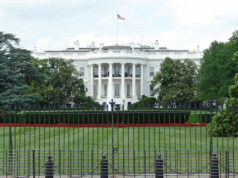Inflation seen holding steady in May

By Luz Wendy T. Noble, Reporter
INFLATION likely remained stable in May, despite an uptick in some food items and a slight recovery in pump prices, according to analysts.
A poll of 17 economists by BusinessWorld held last week yielded a median estimate of 2.2% for May headline inflation, unchanged from April and slower than the 3.2% logged in May 2019.
If realized, this would be closer to the lower end of the central bank’s forecast range of 1.9%-2.7% for the month, and slightly slower than its 2.3% point projection.
The central bank’s inflation target for this year is at 2-4%, although it gave a 1.75% to 3.75% projection as the economy is expected to slow down due to the pandemic.
In the first four months of 2020, inflation averaged 2.6%.
The Philippine Statistics Authority (PSA) is set to report May inflation data on June 5.
Analysts said the rise in food and oil prices were major upside risk factors for inflation in May.
“Timely data suggest fuel prices crept back up, while rice prices rose further,” Alex Holmes, an economist at Capital Economics said.
Oil prices have slightly recovered since the nearly 20-year low in April as major oil producers committed to reduce production by 10 million barrels per day or about 10% of global supply in May.
Domestic pump prices also jumped after the government imposed an additional 10% levy on imported crude oil and petroleum products, according to UnionBank of the Philippines, Inc. Chief Economist Ruben Carlo O. Asuncion.
Meanwhile, PSA data showed the average farmgate price of palay or unmilled rice edged up by 0.75% week on week to P18.81 per kilogram in the first week of May, jumping by 1.95% year on year.
Average wholesale price of regular-milled rice also rose by 0.88% to P35.40 per kilo, while the retail price inched up 0.11% to P37.90. For well-milled rice, prices slightly increased by 0.64% to P39.28 per kilo, while the retail price was 0.38% higher at P42.34.
A 60-day price freeze on basic necessities that began in mid-March ended on May 15. The rule covered basic goods including rice, corn, meat, agricultural products, medical devices and drugs, among others.
Some parts of the country saw a relaxation of lockdown measures during May, which may have boosted demand and led to some price increases.
“[M]arket activities slowly emerge from hibernation with the easing of quarantine measures in some parts of the country,” Security Bank Corp. Chief Economist Robert Dan J. Roces said.
On the other hand, Jiaxin Lu, an economist from Continuum Economics, said the pickup in prices of non-basic commodities such as alcoholic drinks and tobacco, restaurant and miscellaneous goods and services was unlikely amid crimped demand during the lockdown.
As the country continues to ease quarantine restrictions, analysts said the Bangko Sentral ng Pilipinas (BSP) will likely have to wait to see the resulting impact of the reopening of the economy before looking at another rate cut.
“We expect the BSP to hold its monetary policy stance in its June meeting as it pauses to see the impact of measures already taken and look at high-frequency indicators to gauge the speed of recovery in economic activity as more segments of the economy move towards less stringent quarantine measures,” Thatchinamoorthy Krshnan, an economist at Oxford Economics, said.
For Mitzie Irene P. Conchada, an economist from the De La Salle University, the transition to general community quarantine is likely to boost consumer demand as well as investor confidence.
“The BSP might have to wait to see the impact of slowly opening up the economy before adjusting policy rates,” she said.
UnionBank’s Mr. Asuncion said the presence of some inflationary pressures may push the BSP to consider the use of its liquidity tools and likely hold off rate cuts in the second quarter.
On the other hand, some analysts say the central bank’s recent signals as well as the continued benign inflation point to a possible rate cut, although reserve requirement ratio (RRR) is likely to be untouched.
“BSP is expected to cut policy rates by 25 basis points at the June meeting given [BSP Governor Benjamin E.] Diokno’s recent dovish comments,” ING Bank N.V. Manila Senior Economist Nicholas Antonio T. Mapa said.
“Easing inflation will provide further room for the BSP to ramp up its monetary stimulus amid a weakening economy,” Continuum Economics’ Ms. Lu said.
The BSP has taken a pause in easing after aggressively slashing rates by a total of 125 basis points from February to April, which brought down the overnight reverse repurchase to a record low of 2.75% in order to provide support to the economy during the crisis. Lending and deposit rates have likewise been trimmed to 3.25% and 2.25%, respectively.
On the other hand, the RRR for big banks has been cut by 200 basis points in April to 12% to provide liquidity during the lockdown. Reserve requirements for thrift and rural banks were maintained so far at four and three percent, respectively. The Monetary Board said it can cut RRR by up to 400 bps for the whole of 2020.
The next rate-setting meeting of the Monetary Board is scheduled on June 25.




